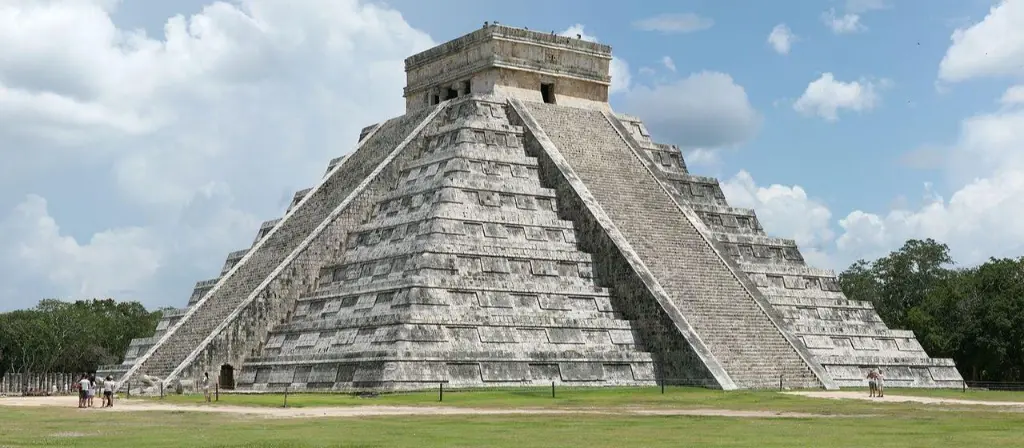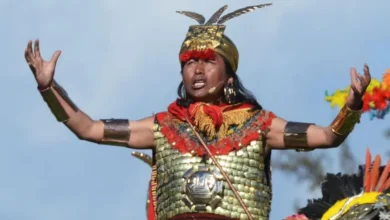Table of Contents
The Maya civilization, one of the most enigmatic and sophisticated societies of the ancient world, thrived for millennia in the heart of Mesoamerica.
Known for their extraordinary achievements in architecture, mathematics, astronomy, and written language, the Maya developed a culture that continues to fascinate scholars and captivate imaginations worldwide. This detailed exploration delves into their origins, societal structures, religious beliefs, monumental achievements, and eventual decline, highlighting the Maya’s enduring legacy.
Origins of the Maya Civilization

The origins of the Maya civilization stretch back to approximately 2000 BCE, during the Preclassic or Formative Period. The fertile lowlands of modern-day Mexico, Guatemala, Belize, Honduras, and El Salvador provided an ideal environment for the early Maya to cultivate crops, establish permanent settlements, and develop their society. These early communities laid the foundation for a civilization that would thrive for thousands of years.
Early Agriculture and Settlement Patterns
The Maya were among the first Mesoamerican cultures to master agriculture, focusing on staple crops like maize, beans, squash, and chili peppers. These crops not only sustained their growing populations but also became deeply intertwined with their cultural and spiritual practices. Early settlements consisted of small villages near rivers and fertile plains, where communal farming and resource-sharing were essential for survival.
Cultural Influences from Neighboring Civilizations
The Olmecs, a neighboring civilization often referred to as the “mother culture” of Mesoamerica, played a significant role in shaping early Maya development. Through trade and cultural exchange, the Maya adopted and adapted Olmec innovations such as ceremonial centers, hieroglyphic writing, and monumental stone carvings. This synthesis of ideas set the stage for the Maya’s own distinct cultural identity.
Geographic Distribution and Key Sites
The Maya civilization was not confined to a single area; instead, it spread across a vast and ecologically diverse region. This geographical expanse influenced the development of distinct regional variations within the civilization, each contributing unique elements to the broader Maya culture.
The Southern Lowlands: A Heart of Culture
The Southern Lowlands, encompassing parts of modern-day Guatemala, Belize, and Mexico, were home to some of the most iconic Maya cities, including Tikal, Calakmul, and Copán.
These cities were hubs of cultural, political, and economic activity, characterized by monumental architecture and sophisticated urban planning. Dense jungles and rich biodiversity supported agriculture and trade but also presented challenges such as soil depletion and water management.
The Northern Lowlands: Centers of Adaptation
Unlike the fertile Southern Lowlands, the Northern Lowlands of the Yucatán Peninsula faced arid conditions. Cities like Chichen Itza and Uxmal adapted to these challenges by developing innovative water storage systems, such as cenotes (natural sinkholes) and chultuns (man-made reservoirs). The distinctive Puuc architectural style of this region, featuring intricate stone mosaics, reflected both practicality and artistic flair.
The Highlands: Trade and Transformation
The mountainous highlands offered rich volcanic soils and valuable resources such as obsidian and jade, which became important trade goods. Cities like Kaminaljuyu and Quiriguá played critical roles in linking the Maya with other Mesoamerican civilizations through trade networks. The highlands were also centers of spiritual activity, as their dramatic landscapes inspired religious symbolism and rituals.
Political Organization
The Maya civilization was not governed as a centralized empire but as a loose network of city-states, each with its own ruler and governing system. This political fragmentation, while fostering regional diversity, also led to frequent competition and conflict.
The Divine Role of Maya Kings
Maya rulers, known as ajaw (lord or king), were viewed as divine intermediaries between the gods and their people. They were responsible for maintaining cosmic order through rituals, warfare, and governance. The legitimacy of a ruler often depended on their ability to perform ceremonies that ensured agricultural fertility and military success.
Diplomatic Alliances and Warfare
While alliances were formed through intermarriage and trade, warfare was a recurring aspect of Maya political life. City-states such as Tikal and Calakmul engaged in prolonged rivalries, vying for dominance over trade routes and territories. Capturing rival leaders and performing rituals with war captives were integral to asserting political power and divine favor.
Religion and Cosmology
The Maya worldview was profoundly spiritual, with religion influencing every aspect of their society. Their cosmology revolved around a complex understanding of time, space, and the relationship between humans and the divine.
The Pantheon of Gods
The Maya worshiped a vast array of gods and goddesses, each associated with natural elements, celestial bodies, and agricultural cycles. Among the most revered deities were Kukulkan, the Feathered Serpent, and Chaac, the rain god. The Maya believed that maintaining balance between these divine forces was essential for the survival of their world.
Sacred Rituals and Offerings
Ritual practices included offerings of food, bloodletting, and human sacrifices, which were considered vital for appeasing the gods. Temples and pyramids served as stages for these elaborate ceremonies, often performed by priests and rulers. The Maya also used sacred cenotes for water-based rituals, viewing them as portals to the underworld.
Time and Prophecy
The Maya’s intricate calendars reflected their advanced understanding of astronomy and time. Their cyclical view of history, as represented in the Long Count calendar, was tied to their belief in recurring cosmic events and the influence of divine forces on human destiny.
Architectural Marvels
Maya architecture stands as a testament to their engineering ingenuity and artistic sensibility. From towering pyramids to sprawling ceremonial complexes, their cities were designed to inspire awe and reinforce religious and political authority.
The Majestic Pyramids
Pyramids like El Castillo at Chichen Itza and the Temple of the Inscriptions at Palenque exemplify the grandeur of Maya architecture. These structures, often aligned with celestial events, were not merely tombs or temples but also symbols of cosmic order and the ruler’s connection to the divine.
Palaces, Plazas, and Ball Courts
Maya cities featured expansive plazas surrounded by palaces, administrative buildings, and ball courts. The ballgame, known as pok-ta-pok, held religious and political significance, symbolizing the struggle between life and death and often culminating in ritual sacrifices.
Sustainability and Urban Planning
Despite environmental challenges, the Maya demonstrated remarkable ingenuity in urban planning. They constructed raised fields, irrigation systems, and roads called sacbeob, which facilitated movement and communication across their vast territories.
Art and Iconography
The Maya were prolific artists whose creations ranged from monumental sculptures to delicate ceramics. Their art served as a medium for storytelling, religious expression, and political propaganda.
Stone Monuments and Stelae
Stelae, tall stone slabs intricately carved with images and glyphs, commemorated significant events and celebrated the achievements of rulers. These monuments often depicted scenes of warfare, religious rituals, and cosmic symbolism.
Pottery and Painting
Maya pottery, adorned with vibrant colors and intricate patterns, served both practical and ceremonial purposes. Many pieces depict mythological scenes and provide valuable insights into Maya life and beliefs.
Codices and Mural Art
The few surviving Maya codices, such as the Dresden Codex, reveal their expertise in astronomy, mathematics, and ritual practices. Murals, like those found in Bonampak, vividly portray royal ceremonies, battles, and daily life, showcasing their mastery of color and composition.
Writing System and Intellectual Achievements
The Maya developed a sophisticated writing system that blended phonetic and logographic elements, allowing them to record complex narratives and calculations.
Glyphs and Script
Maya glyphs, often inscribed on monuments, pottery, and codices, chronicled historical events, genealogies, and religious texts. Their script was highly intricate, with each symbol representing sounds, words, or concepts.
The Rediscovery of Maya Writing
For centuries, the meaning of Maya writing was lost, but significant progress in decipherment during the 20th century has revealed the depth of their intellectual and cultural achievements. This breakthrough has shed light on their history, beliefs, and daily lives.
Conclusion: The Timeless Legacy of the Maya
The Maya civilization, with its remarkable contributions to science, art, and human thought, remains a source of inspiration and curiosity. Despite the challenges they faced, including environmental crises and political strife, the Maya persevered, leaving behind a rich cultural heritage that continues to thrive among their descendants today. Their enduring achievements remind us of humanity’s capacity for innovation, resilience, and the pursuit of knowledge.
